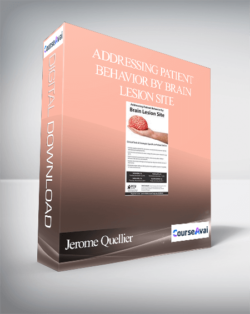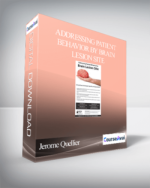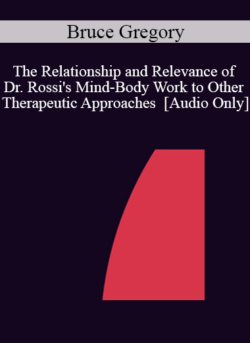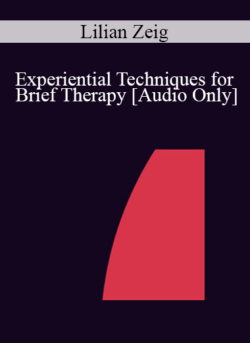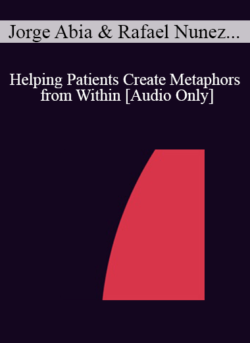Neuroanatomy is admittedly complex and overwhelming. Clinicians working in rehabilitation are faced with growing caseloads, diminished resources/reimbursement, and increasingly medically complex patients with the expectationPurchase Addressing Patient Behavior by Brain Lesion Site: Clinical Tools & Strategies Specific to Patient Deficits – Jerome Quellier courses at here with PRICE $200 $56Addressing Patient Behavior by Brain Lesion Site: Clinical Tools & Strategies Specific to Patient Deficits – Jerome QuellierNeuroanatomy is admittedly complex and overwhelming. Clinicians working in rehabilitation are faced with growing caseloads, diminished resources/reimbursement, and increasingly medically complex patients with the expectation of improving outcomes and reducing length of stay. Honing one’s knowledge of clinically-relevant neuroanatomy and neuropathology can predict dysfunction and intuitively create a scaffold for assessment and treatment even before meeting the patient. Predetermining potential deficits leads to a more tightly defined diagnostic battery and expedites treatment formulation. By deducing the patient’s experience, the clinician can also prepare for behavioral barriers to engagement and understand the healing process with greater compassion.In this recording, you will learn intermediate level neurophysiology as it relates to cognitive-linguistic skills and behavioral control, as well as explore mindfulness techniques for stress reduction. The overlying foci of the recording are to arm treating professionals with an improved clinical eye, predicting dysfunction, and expedite the pathway to treatment. Recording content will also include patient focused educational materials for stroke and traumatic brain injury ready to be utilized by treating practitioners.Identify the gross anatomy and function of lobes of the brain as they apply to behavioral controlDefine neurophysiology of memory and effect of fear/anger upon new learning and memoryAnalyze the effect of traumatic and non-traumatic injuries upon cognitive centersClassify neurotransmitters and the communication system within the brainDiscover optic system and lesion locations that affect engagement and accuracy in therapyDiscover and apply simple neuroanatomy-based techniques to rapidly de-escalate stress for patients and caretakersExplain neuro-behavioral barriers that impact new learningNEUROANATOMY AND THE IMPACT ON COGNITIVE PROCESSING (CASE STUDY ICON)Basic neuronal anatomyBrain wiring: Association, projection, and commissural fiber tractsBrain lobes locations and ties to cognitive processesCerebellum and impact upon cognitionCase Study 1: Jacob’s anxiety and how pacing the halls became therapeuticOPTIC SYSTEM AND VISUAL PERCEPTION (CASE STUDY ICON)Optic constructs, anterior-posterior fiber tractsVisual cortices and unique roles in visual processingEffect of tumors, shear injuries, CVA lesions upon visual perceptionCase study 1: Why can’t my patient just see the whole worksheet like I do?Group Exercise: Review of vision diagnostics by discipline (PT/OT/SLP)HOW NEUROTRANSMITTERS DRIVE THE BUSInternal communication systems within the brainDopamine pathways and effects on cognition and reward systemsSerotonin pathways and mood modulationsEXECUTIVE FUNCTIONS OF THE FRONTAL LOBEThe Cognitive Pyramid and moving patients upwardSkull anatomy and effects of shear injuryShear injury as it affects anxiety and behavioral healthTherapy implications for PT/OT/SLPGroup Exercise: Review of executive function diagnostics by discipline (PT/OT/SLP)COMMUNICATION AND THE LEFT HEMISPHERIC FUNCTIONSBroca’s vs. Wernike’s areasFunction of the arcuate fasciculus upon communicationSPATIAL PROCESSING AND THE RIGHT HEMISPHERIC FUNCTIONSNeurophysiology vs neuropathology, understanding patients’ nonverbal challengesInferential language and social cognitionA sense of time and spatial organization revealedTHE HIDDEN PROCESSORS-THALAMIC INFLUENCESAuditory pathways and neuroanatomyThalamic engagement on sensory informationModulation of sleep and vigilanceMEMORY: HOW THE HIPPOCAMPUS AND THE AMYGDALA PARTNER (CASE STUDY ICON)Memory processesMemory types: Right vs Left hippocampal functionsHypoxia and anoxia upon memory functionSleep and memory consolidation, effect of exercise on memory structuresAmygdala’s influence upon fear-based learning and hijacking executive controlCase study 3: Nile’s hypoxia and long tern rehab outcomesRECOVERY FROM ACCELERATION/DECELERATION INJURIES: DIFFUSE AXONAL INJURY (DAI)Microanatomical features of DAICTE: Chronic Traumatic EncephalopathyWhere medications have failedAGITATION MANAGEMENT STRATEGIESReview how working knowledge of the Rancho Los Amigos levels and Practitioner tips can avoid confrontationLearn trick of the trade for avoiding escalationConfabulation and denial—addressing the elephant in the roomENRICHING PATIENT AND CLINICIAN RELATIONSHIPSThe science behind mediations and mindfulnessReigning in the runaway situation Purchase Addressing Patient Behavior by Brain Lesion Site: Clinical Tools & Strategies Specific to Patient Deficits – Jerome Quellier courses at here with PRICE $200 $56
 Play with a Purpose: Effective Play-Based Therapy & Early Child Development – Cari Ebert
₹9,296.00
Play with a Purpose: Effective Play-Based Therapy & Early Child Development – Cari Ebert
₹9,296.00
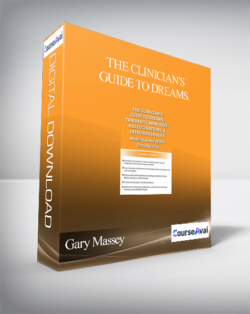 The Clinician’s Guide to Dreams. Traumatic Memories. Hallucinations. and Intrusive Images: Making Sense of the Unconscious – Gary Massey
₹9,296.00
The Clinician’s Guide to Dreams. Traumatic Memories. Hallucinations. and Intrusive Images: Making Sense of the Unconscious – Gary Massey
₹9,296.00
Addressing Patient Behavior by Brain Lesion Site: Clinical Tools & Strategies Specific to Patient Deficits – Jerome Quellier
₹9,296.00

